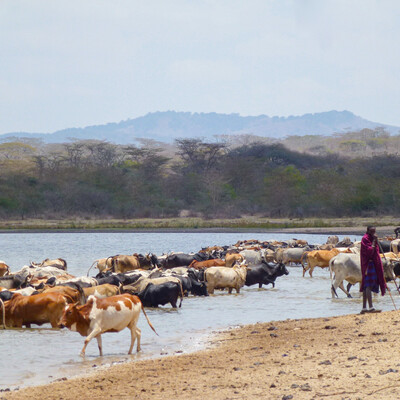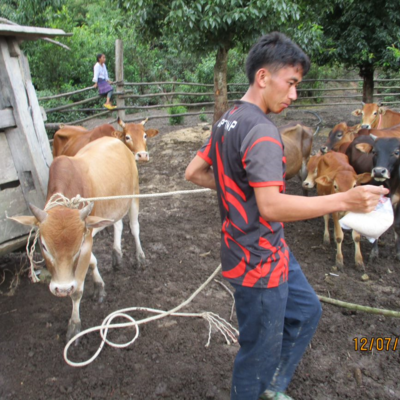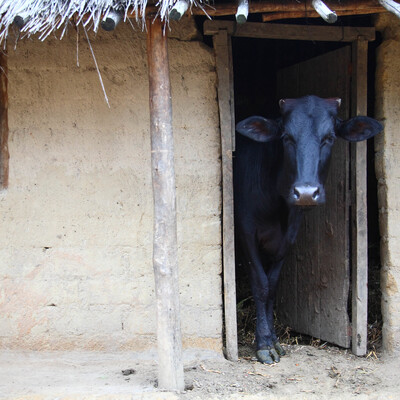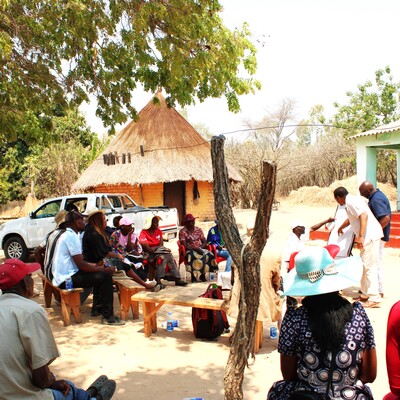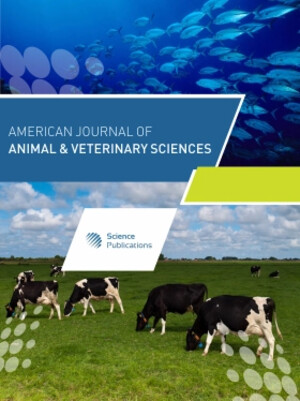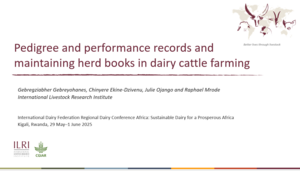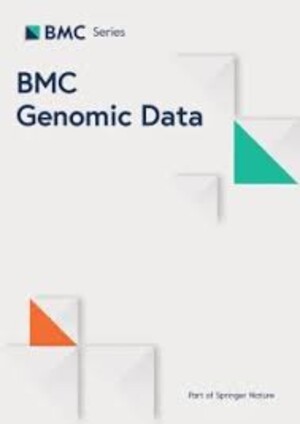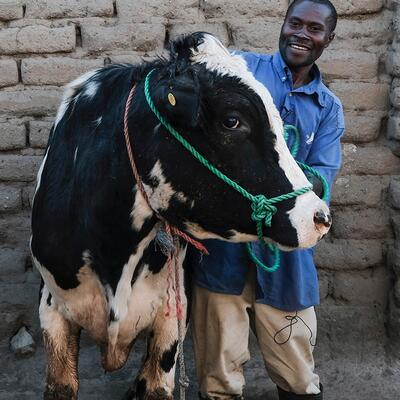
Garlic—A potent (if pungent) ‘Gas X’ methane reducer for cows?
Dairy cow in Embu, Kwnya (photo credit: ILRI/Stevie Mann).
Cattle produce more methane than many large countries. A solution could be an ecological and financial breakthrough — and a Swiss biotech company may be on the cusp. . . .
‘[A] Swiss company called Mootral, is studying whether an altered diet can make cattle burp and fart less methane—one of the most harmful greenhouse gases and a major contributor to climate change.
‘If they were a country, cows would rank as the world’s sixth-largest emitter, ahead of Brazil, Japan and Germany . . . .
‘It is a well-known problem that has had few promising solutions.
But in the last five years, a collection of companies and scientists has been getting closer to what would be an ecological and financial breakthrough: an edible product that would change cows’ digestive chemistry and reduce their emission of methane.
‘Several companies are pursuing a seaweed-based compound, and a Dutch firm, DSM, is testing a chemical supplement with promising results.
Mootral is one of the furthest along. By mixing compounds from garlic, citrus and other additives into a pellet that’s mixed with a cow’s regular diet, the start-up has surprised scientists by significantly and consistently cutting the toxic output of animals . . . .
‘But if Mootral or one of its competitors can withstand the challenges of the coronavirus era and hold up at scale, the result could be one of the simplest and fastest ways to cut a major source of greenhouse-gas emissions. . . .
Cows are a digestive miracle. Inside their stomach is an oxygen-free environment with a steady temperature, similar to the fermentation tanks used to make beer. Microbes decompose and ferment materials like cellulose, starch and sugars. Cows can eat just about anything—grass, hay, cornstalks, rapeseed—and turn it into energy for producing milk and meat.
‘Methane is a main byproduct of the enzymes that help break down the food. The gas can’t be turned into energy, so as it builds up, a cow must burp, sending little puffs of pollution into the atmosphere. (A small amount is released by farting.) Up to 12 percent of a cow’s energy intake from food is lost this way.
‘There are about 1.4 billion cattle globally, each emitting the equivalent of 1.5 to 2.5 metric tons of carbon dioxide each year, roughly half the output of an average American car. . . .
‘[R]esearchers in Denmark and Germany published findings saying the company had reduced cows’ methane emissions more than 50 percent in lab simulations. In Mootral’s first tests in dairy cows on a fully functioning farm, Brades, methane emissions fell 38 percent. A California study found a reduction of about 20 percent in meat cattle.
‘Sixteen tests and studies are scheduled once work stoppages from the coronavirus lifts, including at Purdue University and the University of California, Davis . . . .
There have been unexpected results. Researchers have shown an increase in milk production, possibly because cows that expend less energy expelling methane produce more dairy. The farmers at Brades said flies weren’t bothering their cows as much, perhaps as a result of garlic breath. . . .
‘Eventually, Mootral’s plan is to sell its food additive for about €50 per year per cow. . . .
Read the whole article: The Business of burps: Scientists smell profit in cow emissions, by Adam Satariano, New York Times, 1 May 2020.







